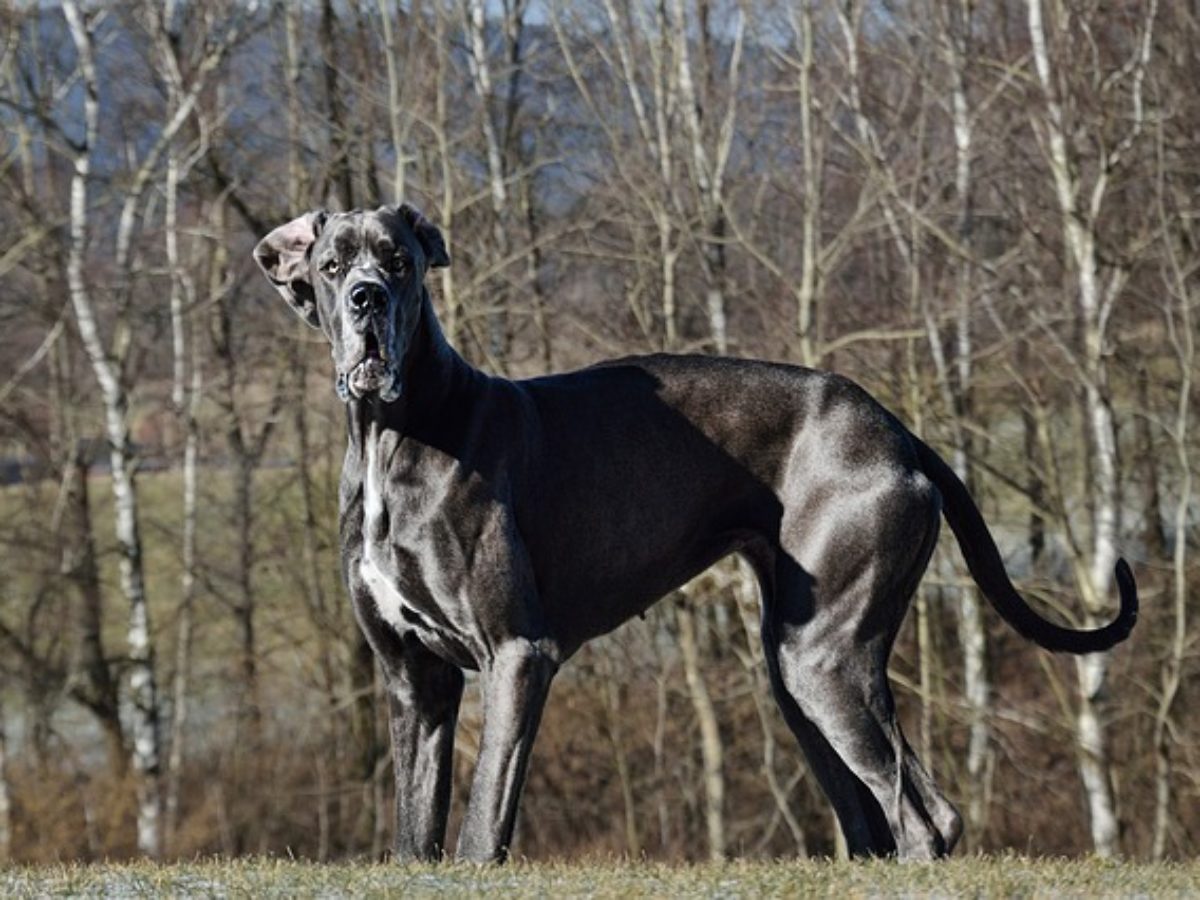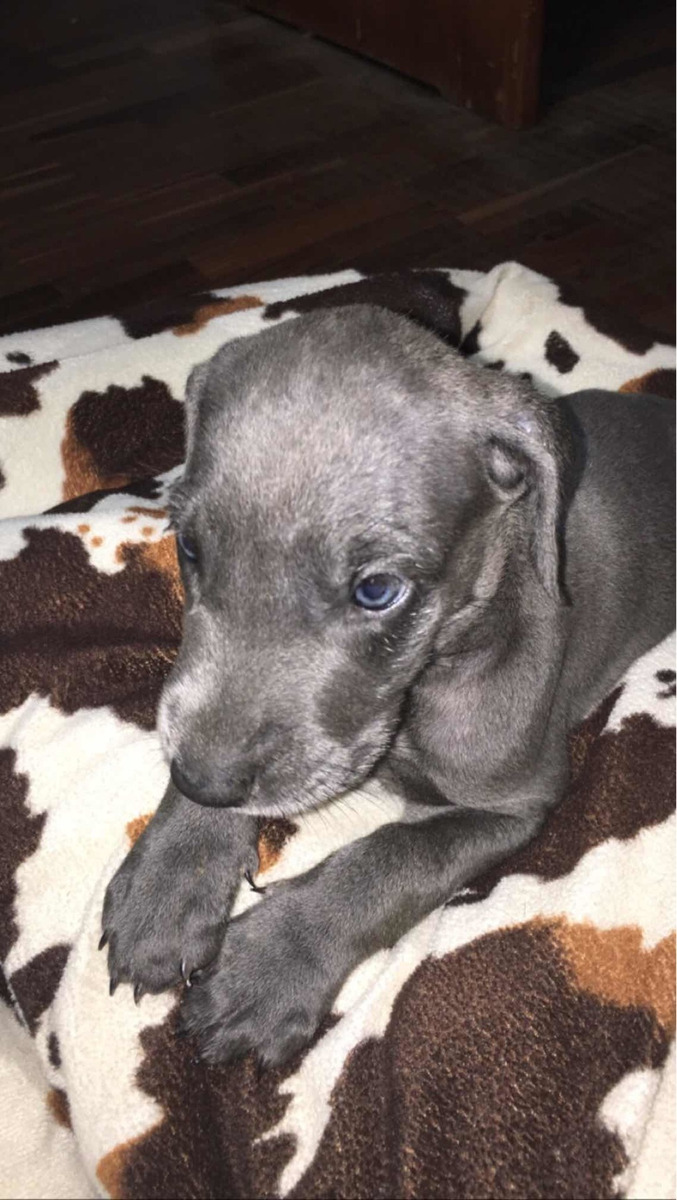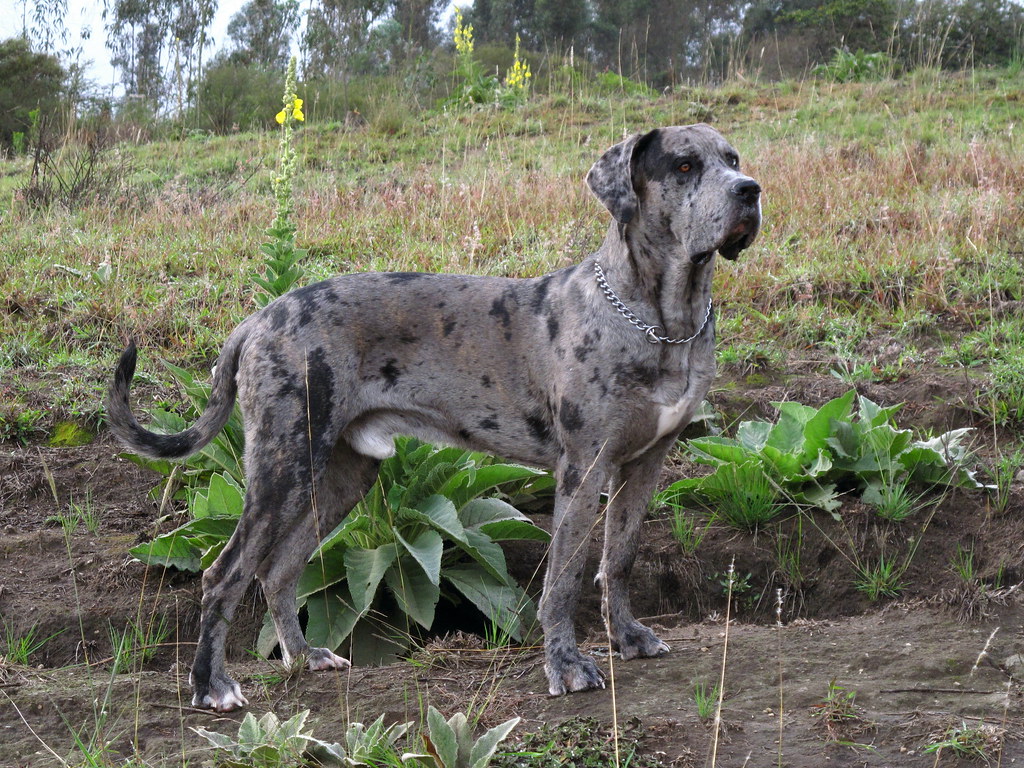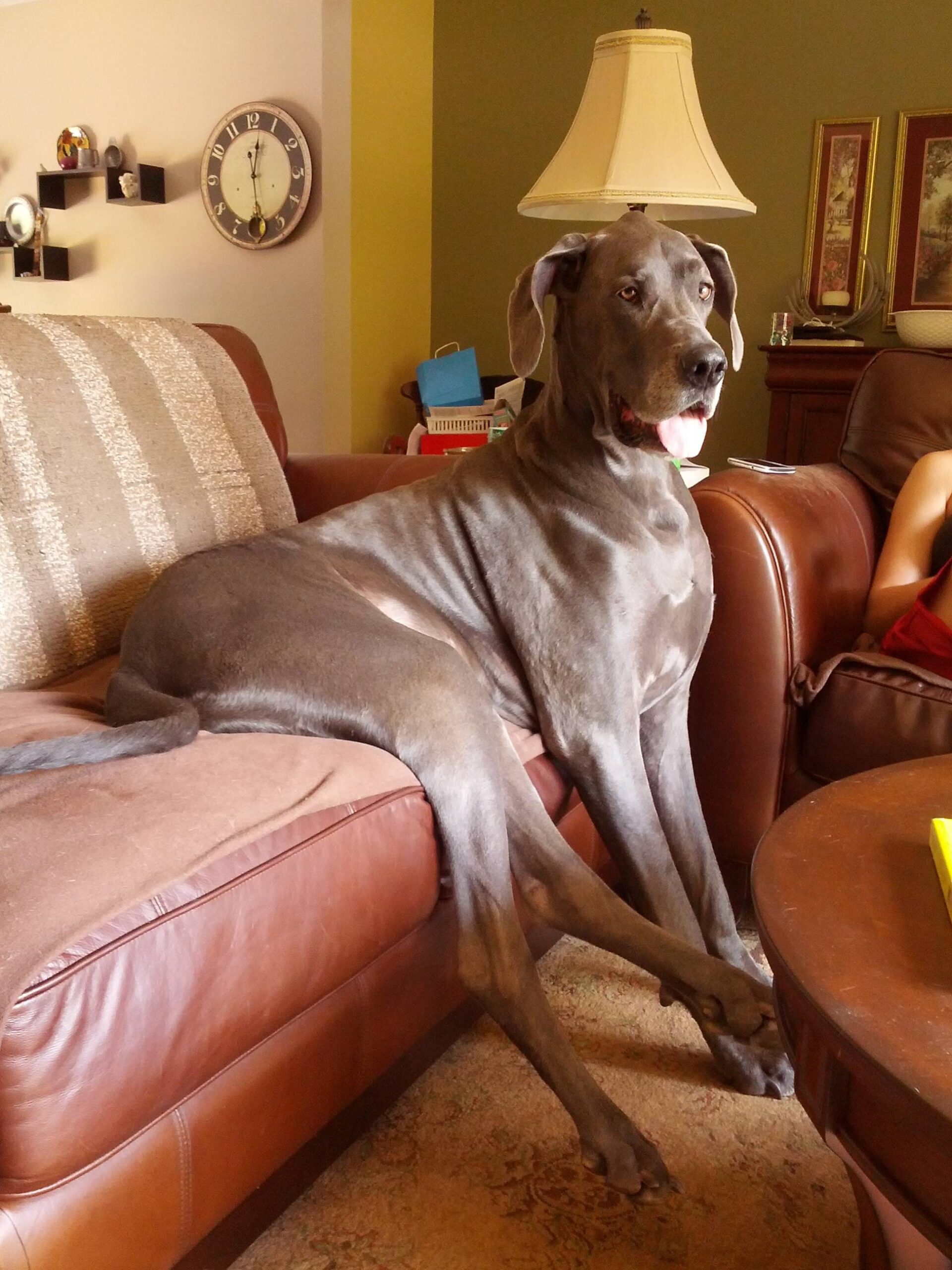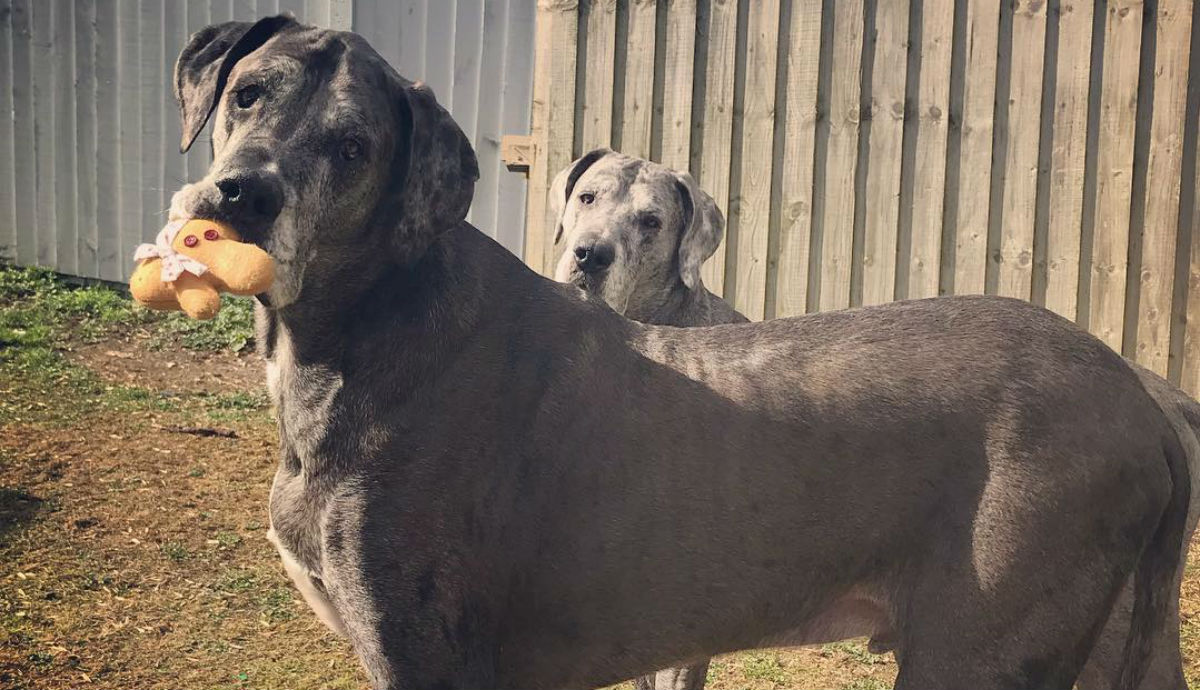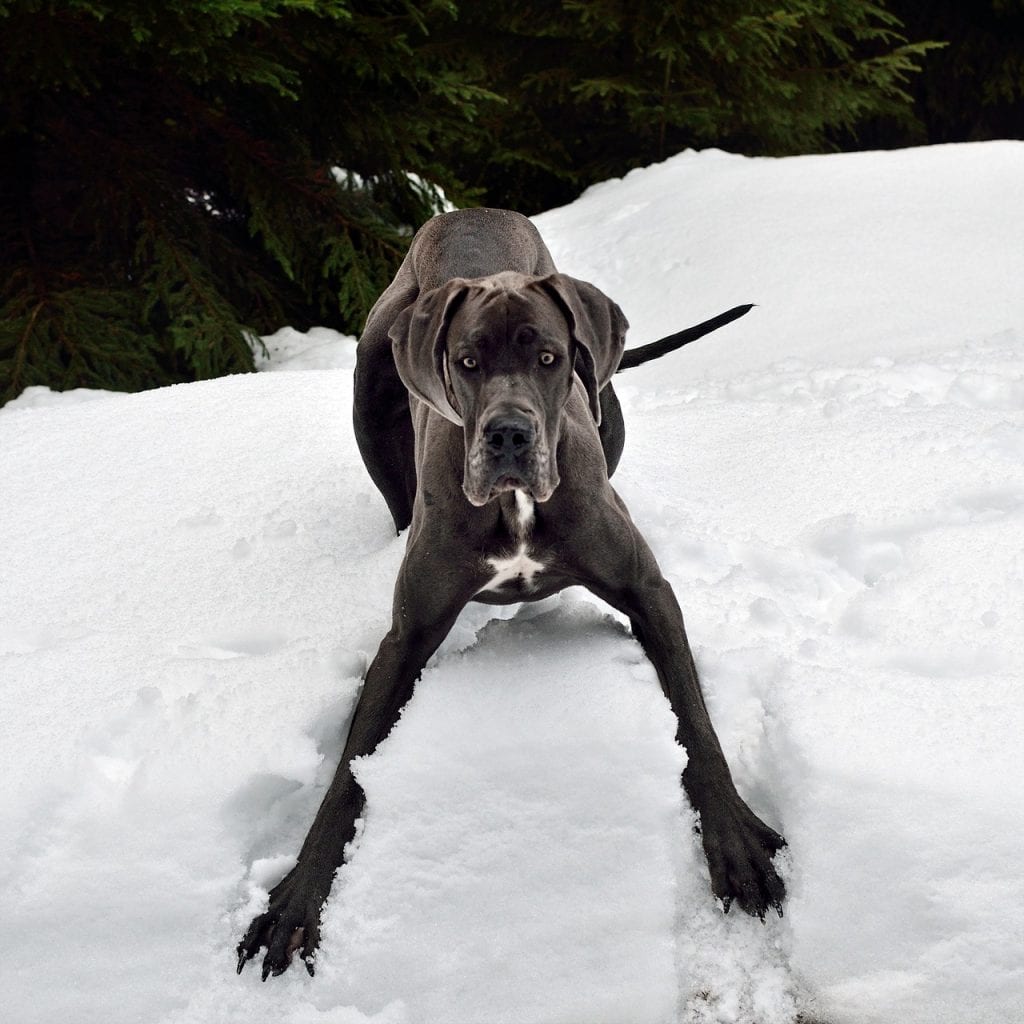El Great dane, it is a unique breed of dog thanks to its large size, it is a magnificent canine specimen, it is a huge dog with a sweet character, the owner of these dogs must take into account that due to their large size they need space and good nutrition. In this article we invite you to learn more about this beautiful dog.

the great dane
The Great Dane, also called German Bulldog, is a characteristic dog lineage due to its tall stature and sweet temperament, distinguished among all breeds by the FCI. It is also contemplated that its offspring is from the Bullenbeisser, a German breed, dogs that generate famous types of dogs hence the origin of the name Generation Bullenbeisser.
Large despite the fact that a huge breed is not slow in its walk or any of its movements, its temperament is affectionate and extroverted, there is a difference in build between males and females.
The build of the male is strong corpulent, it is as if it were square in the same way that it is tall it is long and the females are usually longer than they are tall, the height of the withers is the same between most of the shoulder to the ground they measure the same.
This breed of dog is not for beginners, since it demands important care, like other large breeds, it has a defect that suffers from gastric torsion, so daily walks without much effort or weather changes are important. Keeping a Great Dane has a high cost and that is something to keep in mind before buying or adopting one.
History
The Great Dane is said to be the crossbreed of dogs, as well as the English Mastiff, Afghan Hound, which are large, muscular dogs. Names such as Ulmer dogge, Danish mastiff, English mastiff, Dogue de Bordeaux, great mastiff classification that was given to each of these dogs depending on their color and large size.
In the year of 1878 in Berlin there was a commission of seven people, dog breeders and the judge Dr. Bodinus, where they made the determination to gather all the different dog breeds mentioned above and included them as Deutscher Doggen or German Dogos, giving as result that is created with the independent dog breed.
In the year 1880, in a dog contest held in Berlin, the first classification for the German Bulldog was recognized. The muscular and energetic German Mastiff was not always the friendly giant that he usually appears and identifies with in the present. In fact, he was a daring, violent prey seeker, highly regarded for his stern demeanor and warrior quality.
Fortunately, through unbeatable breeding projects and admirers of this breed, they genetically corrected the breed over the years, resulting in a dog with a friendly and sweet behavior suitable for any type of family and even for those with children. .
Physical Characteristics of the Great Dane
El Great Dane Dog Regarding the descendants of his lineage, the general physiognomy maintains an outstanding structure and perfectly endowed. Cita can already reach 2,10 meters standing on two legs; his best attributes are loyalty, conceit, strength and his peculiar attractiveness.
Of course, from another point of view it can produce fear, however, in most cases it is a wonderful companion dog that gives affection and loyalty to its owners. He is a magnificent mix of tough looks as well as a gentle character unique and specific to the breed.
HAIR: It generally has black spots with gray on the contour of each patch. Its hair is short, thick, shiny and beautiful, regardless of the maintenance it is given.
proportions: At first glance it has a corpulent square body, which measures height is 5% less in length and females have 10% less
Head: In perfect accordance with its absolute appearance. It is long, thin, suitably obvious and exaggeratedly spontaneous, delicately carved mainly in the area below the eyes. Superficial arches well developed but not protruding.
The distance from the tip of the nose to the stop and starting at the stop towards the slightly defined eye bulge should form the same measurement as anticipated. The upper line of the cane of the nose and that of the head must run parallel to the naked eye, starting at the front of the head, it must have a narrow appearance and the nasal cane must be wide enough while the muscles of the cheeks can only be subtly defined in no way can they stand out markedly.
Great Dane Size: The Great Dane dog is a giant in canine society. Its size and its heaviness have no resemblance. The size of the Great Dane can simply get a height of about 90 centimeters, which means that if it just raises its two hind legs it will reach an estimate of just under two meters. The females are slightly smaller than the males, however, it is not an inequality that is too noticeable.
The weight of the Great Dane, the amounts vary between fifty kilograms to approximately ninety kilograms in females, and from sixty-five kilograms to approximately one hundred kilograms in a male, it is an impressive weight that humanity is not used to seeing in a dog. . Apart from the fact that it is one of the large dogs that exist, however, its size is on par with its big heart, and that is why it is one of the most valued breeds as family dogs for people of all kinds and circumstances.
Coat color
The coat of the Great Dane is very tiny and rigid and for this reason it falls under the classification of Short Haired Dogs, scratchy structure to the touch. It normally stays very radiant on its own, however, it can ask for brushings to show off its excellent condition. Specimens can be displayed in assorted colors, all potentially valid and recognized. There is a variety of colors for the Great Dane, the most recognized are:
- jet black: With white spots on the chest and feet, the black hair covers most of the body forming a mantle and on the trunk, belly, legs, neck, chest and the end of the tail may be white.
- deep goldAppearance: Up to light gold with a black nose and no white markings.
- Great Dane Harlequin :EThe most common are white with well-placed black spots. They have irregular broken shapes. They are not accepted with brown, blue or gray spots or splashes either, as this disqualifies the Great Dane in dog shows.
- Tabby: It has a basic color like light gold and very well distributed stripes that draw a direction on the ribs with its completely black face, nor do they have white spots.
- BLUE: It is a dark gray color as the white spots on the legs and chest are allowed.
The facial region of the Great Dane
- Nose: it is black except for the harlequin great dane where the nose has black and white spots, you also did great danes with pink noses and in the blue colored dogs the nose is a faded faded black. The nose is large with well-open nostrils.
- The trunk: with defined black lip edges, rectangular in shape in the harlequin Great Dane the lips can be pale pink.
- Teeth and jaws: They are large and wide, their bite in the form of a complete and strong scissors, they have an amount of 42 teeth.
- Eyes: with a look that expresses their affection, they are great dark. In the blue Great Dane, light-colored eyes are allowed and there are harlequins where light-colored eyes can also be presented or with the characteristic of anisochromia, which is when they have one eye of each color, both dark and light.
- Ears: located in the upper part of the skull, bent at the tip, they are of medium size, the tips of the ears reach the cheeks.
- Neck: Strong and muscular, it is slightly long with a curved line towards the head, giving the eye an elegant bearing.
character of the great dane
With the passing of the years and selective breeding, the Great Dane has become one of the most gentle, loving and emotional breeds. They feel great affection towards their owner, and value their company above all else. He is not a dog that tolerates loneliness well, so he requires a lot of vigilance and continuous care to be happy and affectionate.
The grandiose figure of the Great Dane hides a friendly character. The breed is frequently described as the gentle giant. At the same time, it is known as a very calm and balanced breed, which does not usually show nervousness in any scenario. Likewise, it is comfortable to instruct and discipline and can be a good protective dog due to its size and since it tends to show caution with strangers.
The Great Dane normally in the presence of other domestic animals such as dogs, cats, etc. with humans, friends or family does not show any type of extreme danger or any sign of hunting prey.
Great Dane is a companion dog, it can become an excellent guard if it is well trained, an excellent companion dog for children and even more so when they grow up with them. If the dog is not trained well and is not given the opportunity to become familiar with its own species or with people, it can have aggressive and distrustful behavior.
body features
- Cross: the highest site on the body is stocky and forms right at the top of the dog's shoulder blades or shoulder and extends all the way down the spine
- Back small and firm straight, and progressively inclines backwards.
- Loin: It appears slightly curved broad with a good muscular mass.
- HipsTaste: they are wide and very firm with a lot of meat with a slight slope from the sacrum to where the tail begins, with which it integrates negligibly.
- Chest: starts from the joint of the elbows is wide according to the size of the dog.
- The ribs: they are quite a lot of wide curves it tends very well towards the rear of the dog.
- Chest: like a good width and with well defined chest.
- Bottom line: an abdomen gathered at the back forming a moderately arched line with a lower portion than the thorax.
- Glue: even reaches the tibia-tarsal joint or the ankle. High and wide implantation, tapering evenly to the vertex. In calm it hangs downwards forming an original orbit. when the dog is excited or on the move, it subtly carries it in the shape of a saber, but without considerably exceeding the posterior line. The wire-haired coat below the tail is unattractive.
limbs of the great dane
front legs
- Shoulders are muscular with long shoulder blades and as a 100 degree to 110 degree angle form with the arm
- Strong and corpulent arms long to the shoulder blade
- The elbows are completely straight without any
- Corpulent forearm straight and rigid very strong.
- Articulation of the rigid and inconspicuous carpal radius with the structure of the forearm.
- Front pastern is straight and rigid and seen from the side with a slight fall towards the front.
- Legs are circular with well-jointed curved fingers resembling cat's paws reviews are short hard and black
Hind limbs
- The bones as a whole are protected by a tough muscle mass that makes the hips and thighs look broad and circular. The hind limbs are well sprung and very sturdy with a perspective from the rear of the dog equivalent to the front legs.
- Thighs a length according to the size of the dog, wide and firm.
- Strong knees positioned vertically below the hip joint
- Legs with an approximate size the extension of the thighs. Enough muscle mass developed
- Uniform rigid tibial-tarsal joint without any type of deformation
- Small resistant and vertical metatarsal to the ground
- Feet of the same shape and characteristics of the feet fabric front legs
Movement
Balanced, light with a long range, slightly flexible, both the front and rear legs must have a simultaneous walk.
International Cynological Federation
Any deviation from the previously mentioned criteria is considered as a fault and risk of being in the category of the standard that qualifies the breed of the Great Dane. General appearance
- Undefined sexual characteristics lack of conformity which is exaggeratedly light or quite coarse.
- Character absence of exalted self-confidence will respond to any challenge.
- Head lack of similarity between the upper lines of the nasal cane the head is fruit-shaped or wedge-shaped This is a case that is not very well developed.
- The cheek muscles are very well defined muscular and strong.
- The trunk is pointed, the cheeks do not hang down.
- Nasal bridge stain with deep nostrils.
- Teeth and jaw a number of complete teeth of 42 and the absence of one can be found in the lower jaw and in terms of qualification it can be unnoticed their bite is very strong they have many small teeth.
- Lower line: Abdomen tracing not high enough. Teats that are not short enough.
- Forelimbs: limited parallels. Light bones, weak muscles. Non-vertical composure.
- Shoulders: Loose, overloaded. Fairly vertical distribution of the shoulder blades.
- Elbows: Loose, turned out or in.
- Forearm: Curved, widened at the top of the carpus.
- Radio-carpal joint: Thickened, exaggerated soft, knobby.
- Pastern: In very inclined or very vertical approach.
- Hindquarters: straight, very open or very closed. Calf tibio-tarsal joints. Too narrow carriage or curved limbs.
- Hock: Enlarged, unstable.
- Legs: Flat, elongated quality, separated fingers. spurs.
- Movement: It covers a large part of the terrain. His walk is usual or permanent ambling. Imperfect arrangement between front and rear motor function.
Serious Faults for Great Dane Qualification
- If you have an aggressive or shy character.
- The bite in the form of pincers and not in the form of scissors.
- Deformation in the eyelids and tilting in or out of the eye
- Bent tail.
- The nose in reddish or brown color
- Very sharp trunk with cheeks hanging
- very small teeth
- Eyes with drooping lids and light eyes
- Curved ears with a very low or very high insertion
- Thin or short neck and jowls
- Short curly tail deflected or thick
- Limbs with thin bones and no muscle mass
- Movement with short walk and without constant step without coordination
- Flat feet with toes spread apart
Main diseases of the Great Dane
As is known, huge or giant breed dogs have a very short lifespan than smaller dogs. The longevity of this breed is ten years, however, they can exceed them depending on their way of life and habits. As for the most frequent diseases that manifest in these dogs, consequently, due to their size, they are prone to gastric torsion, so you have to be alert mainly to their nutrition.
They can also experience hip dysplasia, cardiomyopathy, cervical spondylomyelopathy, cataracts, or elbow dysplasia among some of the many diseases that the dog can manifest. Some of these diseases can be avoided by following an appropriate lifestyle, however, it is often appropriate to go to the specialist doctor in case the dog shows any strange signs.
Basic care of the Great Dane
To take care of your Great Dane and have a healthy life, you need to follow some recommendations for the care you should have with the dog. As we already know, it is important Vaccines for Dogs and the subsequent control of it at the same time deworming them and maintaining the doses indicated by a doctor, but these are not the only guidelines that you must follow.
We have already mentioned that the Great Dane suffers from gastric torsion, so you must monitor its nutrition and provide good quality food with the recommended amount and without walking before or after eating, you must also ensure that it does not ingest too much water and meals should be divided throughout the day so you don't have to eat too much at one time.
As far as physical activity is concerned, it is not necessary for it to expend all its energy, but a daily walk several times a day without any effort is recommended so that it does not trigger any health problems for the dog.
It is necessary that the Great Dane, since he is a puppy, socialize with other animals of the same species or any pet and people in order to become a calm, affectionate and controlled dog in his adulthood.
Taking care of your hair does not need more care, simply brushing it every other day and bathing it once or twice a month is enough.
great dane curiosities
Due to its large size it is popular and is what has resulted in the fame of the breed, one of the most popular characters is Scooby Doo, which is a Great Dane famous throughout the world, another equally recognized dog is Marmaduke, great Danish protagonist on the big screen.
The FCI (International Cynological Federation) has named it as the Apollo of all dog breeds thanks to its physical qualities and its unique exemplary behavior among dog breeds. Due to its temperament, the Great Dane wags its tail tirelessly which is dangerous and can cause some damage to objects and people since it literally looks like a saber.
If you plan to adopt or buy a Great Dane, it is recommended that you have full knowledge of all the care and needs of the dog, visit a creator who has experience in the breed so that they can advise you on how to raise them from a puppy so that you can properly instruct them. .
